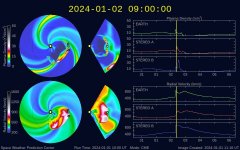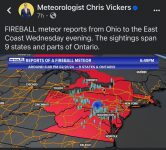View: https://www.youtube.com/watch?v=beGp_Gd9zG0
RT 1:57 - Global News
Predicted meteor blazes across German sky, only 8th time in history event has been forecast
A meteor blazed across the night sky over eastern parts of Germany on Sunday. A dazzling moment, usually only captured by chance on permanently installed webcams.
In a rare event, astronomers were able to predict the impact, which occurred around 1:30 a.m. local time on Sunday.
Michael Aye, a researcher at the Planetary Research Institute in Berlin, was able to capture the meteor after a tip from his colleague Franck Marchis at SETI Institute.
Aye told Reuters the one-metre diameter (3.2 feet) meteor was detected only three hours before impact by Hungarian astronomer Krisztián Sárneczky. According to Aye, it was only the eighth time that a prediction of such an impact by the minute was possible.
According to NASA, the tiny asteroid was set to "disintegrate as a harmless fireball" west of Berlin, near the town of Nennhausen in Brandenburg.
Meteors are objects in space that range in size from dust grains to small asteroids. When they heat up in Earth’s atmosphere, they make a bright trail.














